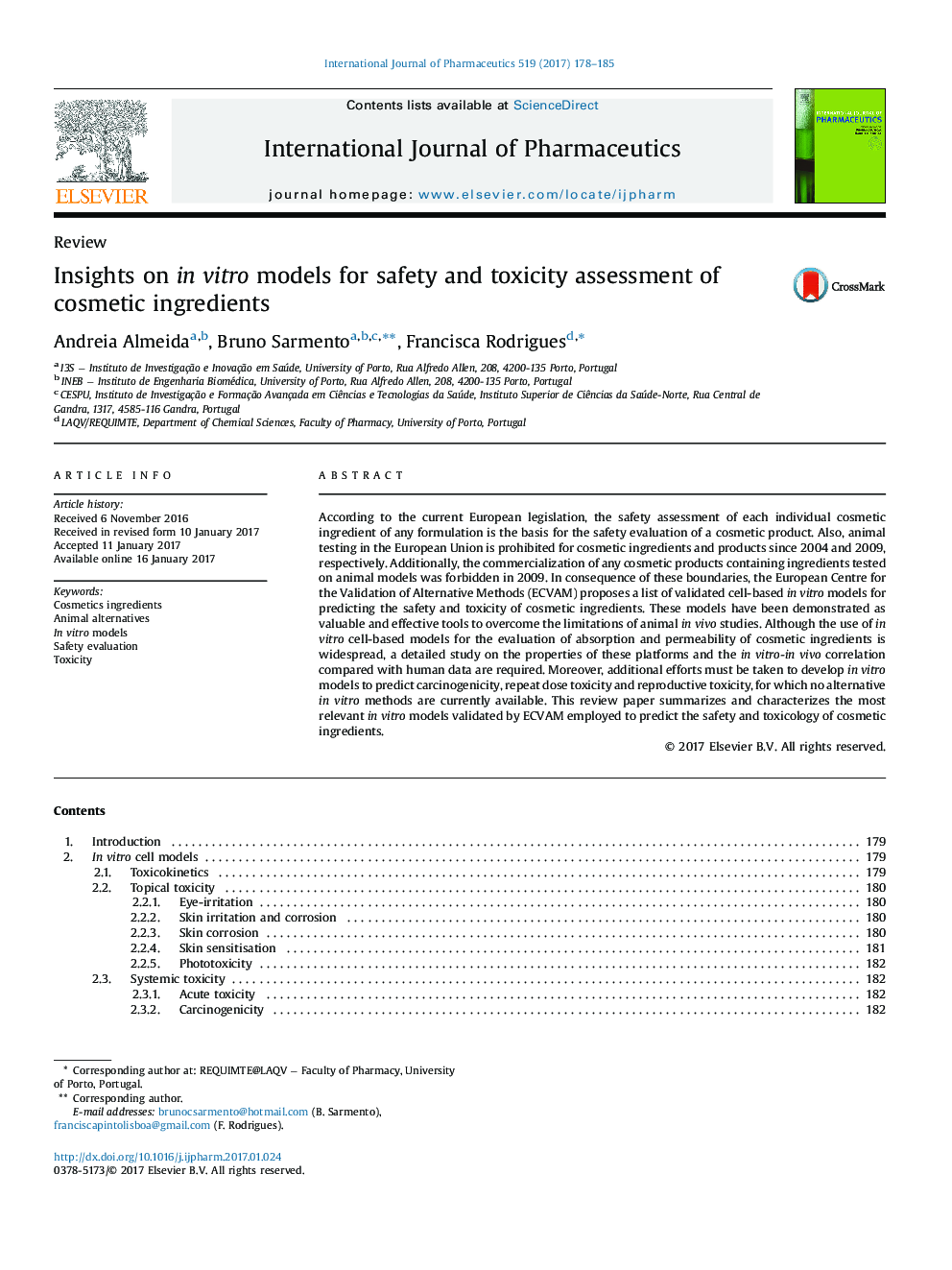| Article ID | Journal | Published Year | Pages | File Type |
|---|---|---|---|---|
| 5550676 | International Journal of Pharmaceutics | 2017 | 8 Pages |
According to the current European legislation, the safety assessment of each individual cosmetic ingredient of any formulation is the basis for the safety evaluation of a cosmetic product. Also, animal testing in the European Union is prohibited for cosmetic ingredients and products since 2004 and 2009, respectively. Additionally, the commercialization of any cosmetic products containing ingredients tested on animal models was forbidden in 2009. In consequence of these boundaries, the European Centre for the Validation of Alternative Methods (ECVAM) proposes a list of validated cell-based in vitro models for predicting the safety and toxicity of cosmetic ingredients. These models have been demonstrated as valuable and effective tools to overcome the limitations of animal in vivo studies. Although the use of in vitro cell-based models for the evaluation of absorption and permeability of cosmetic ingredients is widespread, a detailed study on the properties of these platforms and the in vitro-in vivo correlation compared with human data are required. Moreover, additional efforts must be taken to develop in vitro models to predict carcinogenicity, repeat dose toxicity and reproductive toxicity, for which no alternative in vitro methods are currently available. This review paper summarizes and characterizes the most relevant in vitro models validated by ECVAM employed to predict the safety and toxicology of cosmetic ingredients.
Graphical abstractDownload high-res image (97KB)Download full-size image
